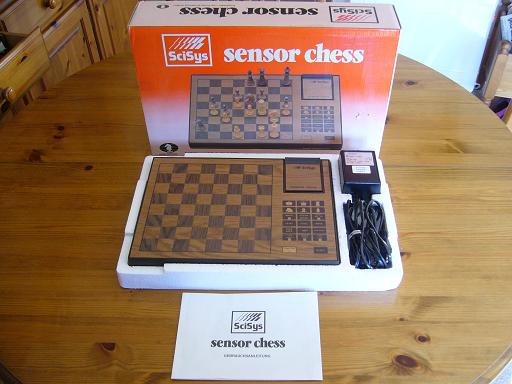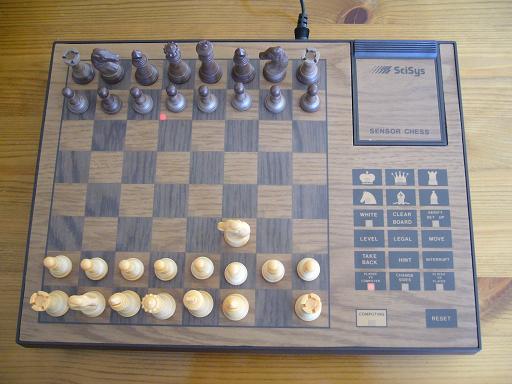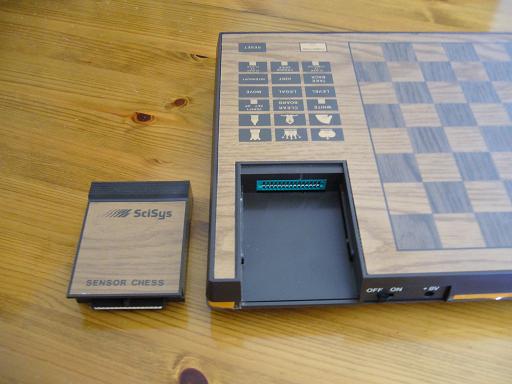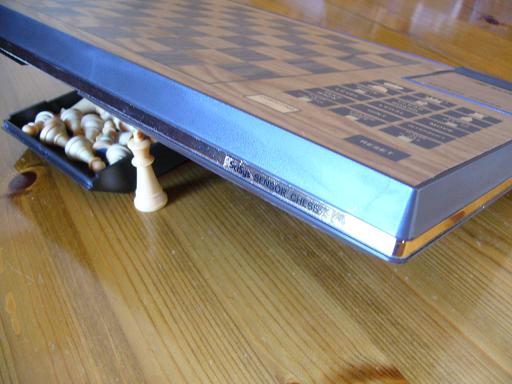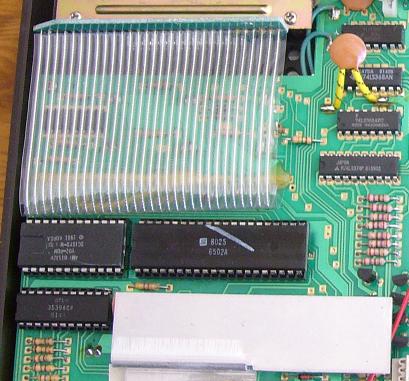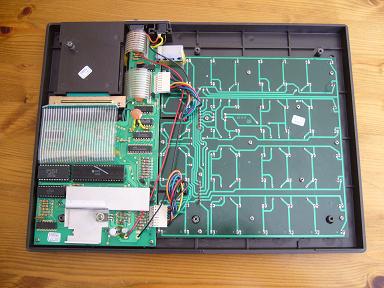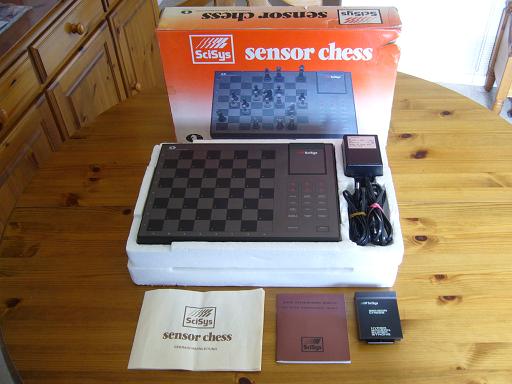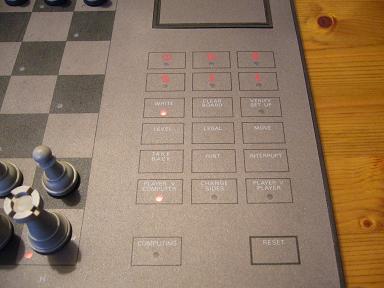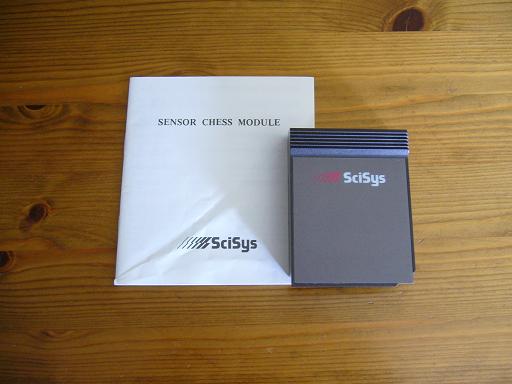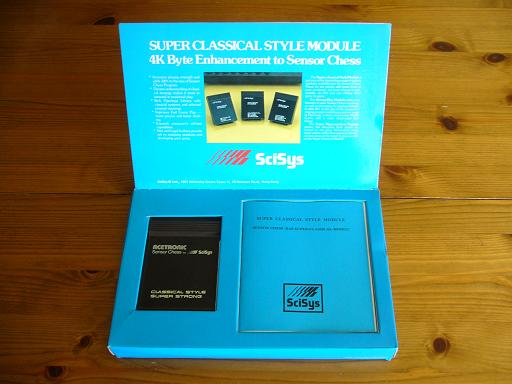|
Released in 1981 the Sensor Chess was SciSys’s bid for a slice of the rapidly growing tabletop press sensory market. This model was in direct competition with the Fidelity’s Chess Challenger Voice Sensory and the Novag Super Sensor IV. The Sensor Chess was released in two versions, in grey (see below) and in the plastic simulated wood finish. The chess computer is unusual in that the LEDs on each square and the keypad are located below the chessboard surface, which is translucent.
The Sensor Chess also signalled a move away from using the UK programmers at Philidor Software and Intelligent Software. 1967 World Junior Chess Champion Julio Kaplan cut his commercial chess program teeth on the Mattel Computer Chess. Having finished that project he set up Heuristic Software Corporation in California, took on other projects, hiring a number of programmers particularly Craig Barnes, another very strong chess player who worked for him on the Mattel. They wrote the program for the SciSys Sensor Chess and their programs were used in most SciSys and Saitek machines for the next twenty years.
Theoretically the big advantage of the Sensor Chess was the modular capability. To their credit SciSys actually followed up on the upgrade potential by producing modules programmed by Heuristic Software. They were called the Strong Play (2K Rom, includes hint and legal moves features), Classical Style Super Strong (4K Rom, Centre Openings) and Hypermodern Super Strong (4K Rom, Flank Openings). There may also be a later 4K Super Strong Play module which I have not seen.
Confusion can occur about how many modules were released because SciSys used different names on the module, box and manual.
However at the bottom of the page are pictures thought to be of early 2K versions of the Hypermodern and Classical modules (thanks to Steve Blincoe for the photos). The most likely situation is this, three modules in general circulation; two others produced in small numbers initially; but no sixth module. It has to be said that none of the modules are easy to find and sales of any of them must have been limited.
The basic price for the Sensor Chess in Germany was a very reasonable 349 DM, less than the price of a Sensory 8 and much less than half the price of a Voice Sensory or Mark V.
|
